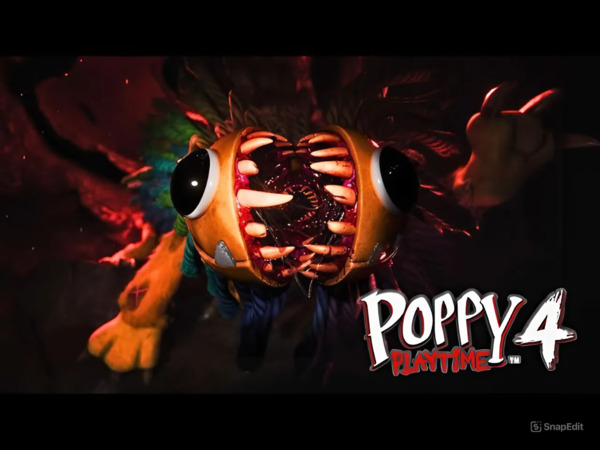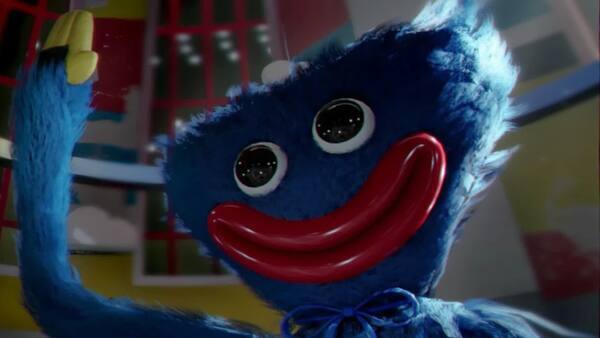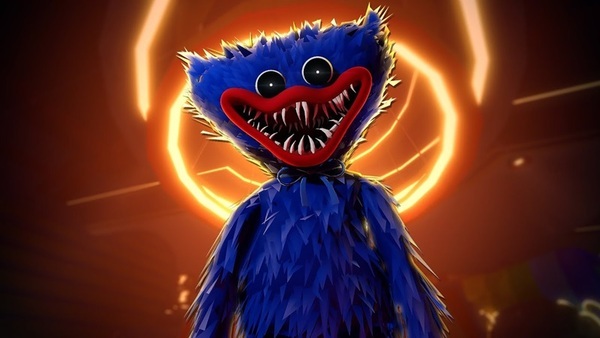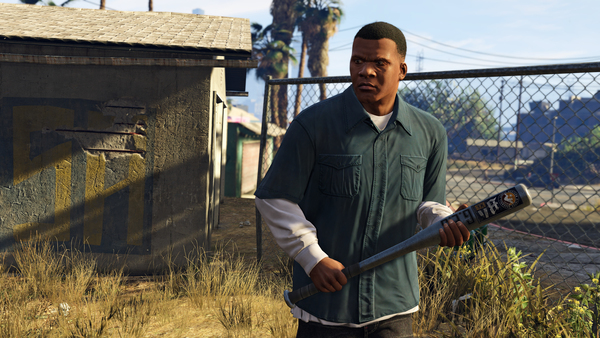Popular Now
Poppy Playtime has swiftly risen in popularity as one of the most talked-about indie horror games in recent years. It combines childhood nostalgia, an eerie atmosphere, and disturbing animatronics to craft a compelling horror experience. However, beyond the surface-level jump scares and puzzles, the game taps into deeper psychological themes that resonate with players on a more emotional level. One significant aspect of Poppy Playtime that stands out is how the game manipulates horror and the unknown. This article will explore the psychological impact of these elements on players and how they shape the overall narrative and gameplay experience.
In this article, we will focus on how the game’s design, storyline, and atmosphere provoke a sense of fear and curiosity in players. The emphasis will be on how the unknown aspects of the game keep players in a state of suspense, often leaving them feeling trapped between fear and fascination.
The Role of Horror in Poppy Playtime: Fear of the Unseen
A Disturbing Atmosphere of Abandonment
From the very start, Poppy Playtime creates a sense of unease by placing players in an abandoned toy factory. The setting itself is an uncanny representation of a place that should be familiar yet feels entirely alien. The game's ability to create an atmosphere of abandonment is crucial in generating fear, as it taps into the primal human fear of being alone in a dangerous place with no one around to help.
- Empty Spaces: The empty factory is quiet, save for the occasional sound of creaking metal or distant footsteps. The silence adds to the feeling of isolation, making the player feel as though they are intruding on a long-forgotten secret.
- Unsettling Sound Design: The sound design in Poppy Playtime amplifies the feeling of loneliness. There’s a distinct lack of ambient noise except for the eerie, mechanical sounds. The absence of human voices creates a constant reminder that something is wrong, heightening the tension.
This abandonment theme plays into one of the deepest fears humans face: the fear of the unknown. When exploring the factory, players are never entirely sure if they are alone or being watched. The sense of something lurking in the shadows keeps the player on edge.
The Unknown and Unpredictable: How the Game Teases Players
A Game of Constant Surprises
Poppy Playtime stands out for its unpredictability. As players venture through the dark, decaying halls of the factory, the game offers very little in terms of security or predictability. The animatronics, including Huggy Wuggy, are initially presented as mere toys that seem harmless. However, as the game progresses, they reveal their more sinister nature, with each encounter becoming more violent and terrifying.
- The Element of Surprise: At any given moment, the game might introduce new threats, from the sudden appearance of Huggy Wuggy to the more mysterious figures that begin to appear. The unexpected nature of these encounters keeps players in a constant state of heightened anxiety, not knowing when or where the next threat will come from.
- The Use of Sound and Visuals: The game’s sound and visuals also play a role in this unpredictability. Sudden bursts of sound, such as the growl of an animatronic or the sounds of footsteps echoing through the halls, warn the player that danger is near. The visual aspect, particularly the dark and foreboding shadows, suggests that danger could be lurking just out of sight.
This constant unpredictability mimics one of the most terrifying aspects of horror: the fear of what’s coming next. The unknown, whether it’s a monster, a trap, or a hidden mechanic, keeps players on their toes.
Psychological Manipulation Through Childhood Nostalgia
The Twist of Innocence Lost
What makes Poppy Playtime uniquely terrifying is its ability to manipulate childhood nostalgia. The toys and setting initially appear to be innocent, reminiscent of the toys and places many players experienced as children. However, the deeper the player delves into the factory, the more these seemingly innocent figures begin to take on darker, more unsettling forms.
- Toys as Objects of Horror: Toys, once symbols of childhood joy, become grotesque figures of terror. The cheerful appearance of the factory's mascot, Poppy, contrasts sharply with the horrific and dangerous environment surrounding her. This contrast is what makes the horror so effective, as it triggers a primal reaction to something that is supposed to be comforting but is instead horrifying.
- The Subversion of Innocence: The game subverts the traditional view of toys as friendly companions. The very first puzzle, involving the GrabPack, is introduced in such a way that it’s hard to know whether it’s a tool to help or a trap. This subversion of innocence creates an emotional disconnect for the player, who feels uncertain about what is safe and what isn’t.
By manipulating this nostalgia, Poppy Playtime taps into a powerful psychological reaction: the loss of innocence. What should be comforting is instead terrifying, amplifying the emotional response of fear.
The Fear of the Past: Uncovering the Factory’s History
Telling a Story Through Abandoned Clues
One of the most engaging aspects of Poppy Playtime is its narrative structure. As the player explores the factory, they are gradually introduced to fragments of the story through tapes, notes, and other clues scattered around the environment. This method of storytelling plays into the fear of the past, as it becomes clear that something terrible occurred at the factory long ago.
- Tapes and Notes: The tapes that players find throughout the game are recordings from former employees. These tapes are often cryptic, leaving players to piece together the puzzle of what happened. The unease comes from the fact that these recordings suggest a history of violence and exploitation, creating a sense of foreboding.
- Uncovering the Truth: As the story unfolds, it becomes clear that the toys in the factory are more than just inanimate objects—they are the products of dark experiments, and the factory’s closure was not just a matter of business failure, but a cover-up of horrific events. The gradual revelation of these truths is what makes the game’s narrative so gripping.
The fear of the past taps into a common human fear: that something terrible has happened, and the remnants of it are still lingering, waiting to be discovered. In Poppy Playtime, the discovery of these remnants drives both the narrative and the fear that the player experiences.
The Psychological Tension of Puzzles and Exploration
The Puzzle as a Means of Tension Building
Puzzles are an integral part of the gameplay in Poppy Playtime. However, unlike typical puzzle games, these puzzles are designed to induce tension rather than provide relaxation. The puzzles often require the player to solve them under duress, with animatronics like Huggy Wuggy lurking nearby, creating an intense feeling of urgency.
- Puzzles Under Pressure: The player must think quickly and solve puzzles while being aware of the looming threat. This dual focus—solving puzzles while avoiding danger—creates a unique blend of mental and physical tension.
- Exploration in a Hostile Environment: The factory itself is a maze of dark corridors and tight spaces, forcing players to explore areas that feel both unsafe and unfamiliar. The environment encourages exploration, but with a constant undercurrent of danger, making every corner turned a new potential threat.
This blend of puzzle-solving and exploration, set against a constant backdrop of fear, builds a sense of psychological tension that keeps players engaged and on edge.
The Use of Isolation: A Solitary Horror Experience
The Loneliness of the Player Character
Throughout most of Poppy Playtime, players are alone. This sense of isolation is integral to the horror experience, as it forces the player to confront their fear without the aid of other characters. While other horror games may offer companionship, Poppy Playtime emphasizes solitude, with only the occasional appearance of the malevolent animatronics to break the silence.
- No Outside Help: The absence of NPCs or allies means that the player must rely on their wits and instincts to survive. This lack of support adds to the feeling of helplessness and vulnerability, amplifying the horror.
- Lonely Exploration: The factory is large and empty, with only the occasional sound of creaking machinery and distant footsteps. The sense of isolation makes the environment feel both vast and claustrophobic, forcing the player to explore places they would typically avoid out of fear.
This deliberate isolation taps into the psychological fear of being alone in a dangerous environment. The player is not only afraid of the monsters but also of the overwhelming sense of isolation that comes with navigating the factory on their own.
The Unsettling Nature of the Animatronics
The Terrifying Reality of the Toys
Animatronics, like Huggy Wuggy, are central to the horror of Poppy Playtime. These seemingly innocent toys become horrific threats as they begin to exhibit lifelike behaviors, from sudden movements to violent actions. The juxtaposition of their playful design with their deadly nature creates a deeply unsettling experience for players.
- Lifelike Movements: One of the most disturbing aspects of the animatronics is how they appear to come to life. The smooth, almost fluid movements of these creatures create an uncanny valley effect, where they seem both real and unreal at the same time.
- Threats from Innocence: Huggy Wuggy, in particular, serves as a representation of the corrupted innocence of childhood. What should be a harmless, cute mascot becomes a symbol of terror, attacking the player without warning.
The unsettling nature of the animatronics plays on the fear of the familiar turning dangerous, creating an atmosphere of constant dread.
The Descent Into Madness: Exploring the Psychological Horror
What Drives the Fear in Poppy Playtime?
The psychological horror of Poppy Playtime isn’t just about monsters lurking in the dark. It’s about the slow, creeping realization that nothing is what it seems. As players delve deeper into the factory and uncover more of its dark past, the boundary between the real world and the twisted reality of the factory blurs. The player’s mind is continually challenged, creating a sense of disorientation that is as terrifying as any jump scare.
- The Fear of Corruption: The game explores the idea that childhood joy and innocence can be corrupted. The factory, once a place of creation, has now become a tomb for twisted experiments. This corruption is reflected in the gameplay, as toys and objects that should bring comfort instead bring terror.
- The Psychological Cost: As the player unravels the mystery, they are forced to confront the consequences of what happened in the factory. The psychological cost of learning the truth becomes part of the horror, as players are not only dealing with external threats but also the internal struggle of uncovering these dark secrets.
This descent into madness, as players come closer to understanding the full scope of the horrors in the factory, plays on a core fear: the fear of losing control and sanity.
Conclusion
Poppy Playtime is more than just a horror game with a few jump scares; it is a carefully crafted experience designed to explore the darker recesses of the human psyche. The game’s use of abandonment, the unknown, childhood nostalgia, isolation, and psychological manipulation creates a multi-layered experience that keeps players on edge throughout. By continuously challenging the player’s perceptions and expectations, Poppy Playtime taps into a deep, primal fear that resonates with many.
The game’s ability to blend unsettling atmosphere, narrative, and gameplay mechanics ensures that it will leave a lasting psychological impact. Players don’t just walk away from Poppy Playtime scared—they walk away questioning the nature of fear itself.















